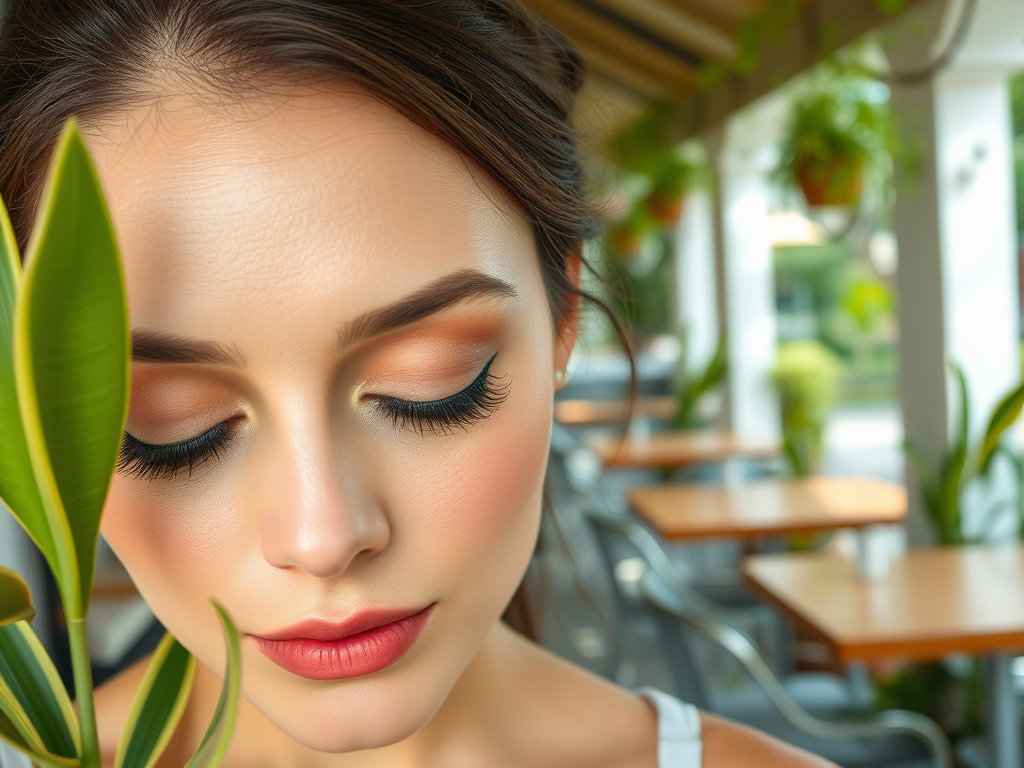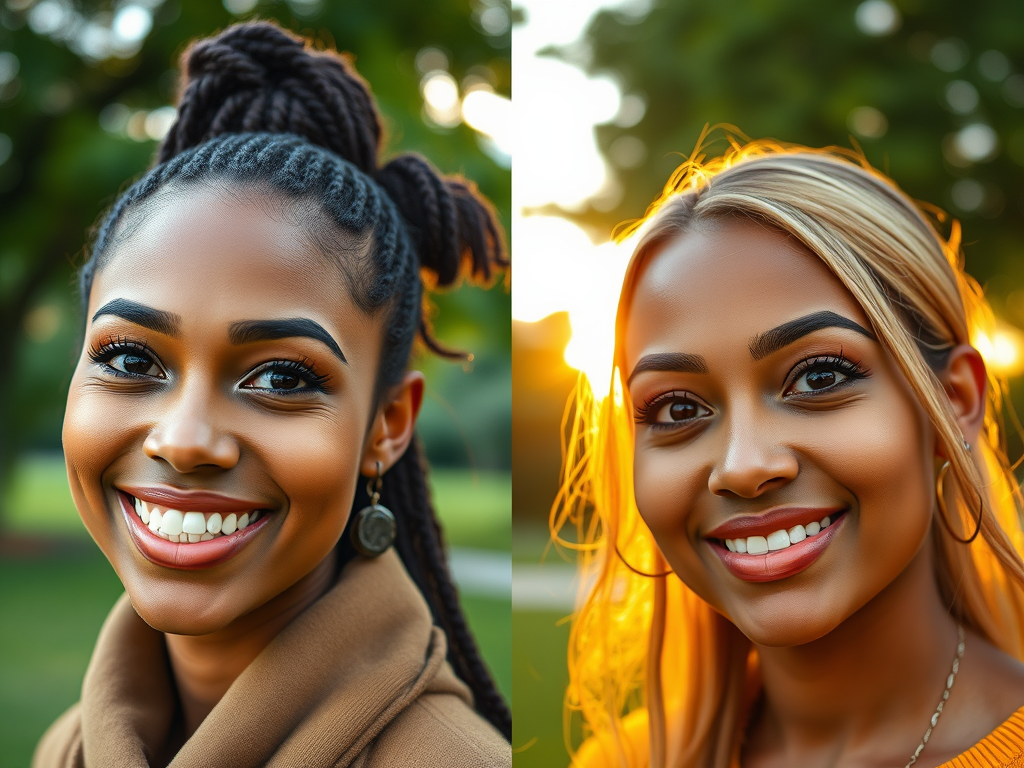Eye shapes have long fascinated beauty enthusiasts and professionals alike, influencing how we perceive facial features. This intriguing topic encompasses much more than mere aesthetics; it delves into areas of emotional expression, makeup techniques, and even the psychological cues they convey. Understanding the differences between upturned and downturned eyes can empower individuals to embrace their unique beauty and highlight their natural features. Moreover, knowing how to accentuate these eye shapes can significantly enhance one’s overall presentation.
While one might think that eye shape is merely a physical trait, it carries a wealth of meaning and can define personal style in profound ways. Upturned eyes, with their captivating upward angles, often exude a sense of warmth and approachability. On the other hand, downturned eyes offer a more contemplative allure, adding depth and a touch of mystery. By exploring both eye shapes, we can appreciate how they impact beauty and individual expression and discover techniques that make each shape shine.
Understanding Eye Shapes

Eye shapes significantly influence the perception of our features. They can affect the overall aesthetics of the face and even impact makeup choices. Certain eye shapes are often associated with particular beauty ideals, making it essential to understand and embrace your own. Both upturned and downturned eyes have distinct characteristics that define them.
What are Upturned Eyes?
Upturned eyes are characterized by their outer corners being higher than the inner corners. This eye shape creates a captivating and youthful look, often associated with a playful innocence. Many people with upturned eyes find that this angle accentuates their natural expressiveness and joyfulness. Celebrities like Olivia Wilde and Taylor Swift are great examples of this enchanting eye shape.
What are Downturned Eyes?
Conversely, downturned eyes are marked by outer corners that slope downwards. This shape can evoke a softer and sometimes more melancholic expression. Many individuals with downturned eyes appreciate how it provides a unique sense of depth and character to their facial features. Anne Hathaway and Kristen Stewart are among the well-known figures who showcase this eye shape elegantly.
The Aesthetic Appeal of Eye Shapes

The beauty industry often discusses how different eye shapes can enhance facial features, guiding makeup techniques and styling choices. Understanding these unique attributes can help individuals discover the most suitable products to complement their natural beauty.
Makeup Techniques for Upturned Eyes
Makeup techniques for upturned eyes can effectively highlight their natural beauty. Here are some recommended strategies:
- Winged Eyeliner: Extending eyeliner upward can accentuate the eye shape and create a dramatic effect.
- Highlighting the Inner Corner: Brightening this area can make the eyes appear even larger and more open.
- Soft, Neutral Shadows: Using earthy tones can enhance the natural shape without overpowering it.
Makeup Techniques for Downturned Eyes
For downturned eyes, specific makeup methods can help lift and balance their appearance:
- Lifting Eyeliner: Adopting a soft wing at the outer edges counteracts the downward slope.
- Concentrating on Upper Lash Volume: Applying mascara only to the upper lashes can create an illusion of height.
- Light, Shimmery Eyeshadows: Applying them to the inner corners brightens the eyes and adds dimension.
Here’s a quick comparison in table form:
| Eye Shape | Characteristics | Makeup Tips |
|---|---|---|
| Upturned | Higher outer corners | Winged eyeliner, inner corner highlight |
| Downturned | Sloping outer corners | Lifting eyeliner, focus on upper lashes |
The Emotional Impact of Eyelid Shapes
The shape of your eyes can convey different emotions and expressions, significantly influencing social interactions. Interestingly, studies suggest that people with upturned eyes may be perceived as more approachable and friendly. This initial impression can have a profound impact on personal relationships and social dynamics.
Upturned Eyes and Emotional Expression
Upturned eyes often exude warmth and approachability, qualities that can help facilitate open communication. Individuals with this eye shape might find others are drawn to them due to their expressive nature. This can lead to enhanced social interactions and an easier time making new connections.
Downturned Eyes and Mood Perception
On the flip side, downturned eyes might project a more serious and contemplative demeanor. People may interpret this as depth or even wisdom, which can evoke different responses from others. Those with this eye shape might find they are often viewed as more serious, which can be advantageous in professional settings or creative endeavors.
Choosing the Right Eyewear Based on Eye Shape
Special consideration should be given to choosing eyewear that complements the shape of your eyes. The right frames can greatly enhance your overall appearance, balancing features and providing the finishing touch to your look.
Eyewear for Upturned Eyes
Frames that balance the upward lift of upturned eyes can enhance their natural beauty. It’s essential to choose styles that work harmoniously with the eye shape.
- Cat-eye Frames: These can emphasize the lift of the outer corners.
- Angular Designs: Such frames add definition and contrast to the soft curves of the eyes.
Eyewear for Downturned Eyes
On the other hand, downturned eyes benefit from glasses that provide lift and balance. Here are some suggestions:
- Round Frames: These can soften the downward slopes and create a gentle look.
- Uplifted Styles: Frames that have a slight upward tilt add a refreshing balance to the overall appearance.
Conclusion
In essence, both upturned and downturned eyes hold unique beauty and charm. Embracing one’s natural eye shape and employing specific makeup techniques can significantly enhance facial features. The key lies in understanding how to highlight one’s strengths, regardless of the eye shape. By learning about the nuances associated with different eye shapes and practicing the right techniques, individuals can not only enhance their appearance but also boost their confidence. Ultimately, every eye shape tells a story, and embracing yours can unlock newfound self-love and appreciation.
Frequently Asked Questions
- What is the most common eye shape? The most common eye shape is almond, which combines traits of both upturned and downturned eyes.
- Can eye shapes change over time? Yes, factors like aging, health, and lifestyle can influence the appearance of eye shapes.
- How do I determine my eye shape? You can analyze the corners of your eyes and compare the angles: upward, downward, or neutral.
- Are there makeup tips for sensitive eyes? Yes, using hypoallergenic products and focusing on gentle application can help individuals with sensitive eyes.
- What celebrity has upturned eyes? Many celebrities, such as Olivia Wilde and Taylor Swift, are known for their upturned eye shape.
- What celebrity has downturned eyes? Celebrities like Anne Hathaway and Kristen Stewart are recognized for their beautiful downturned eyes.